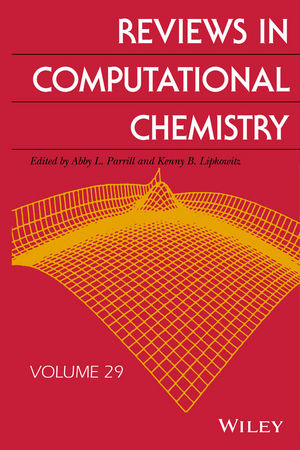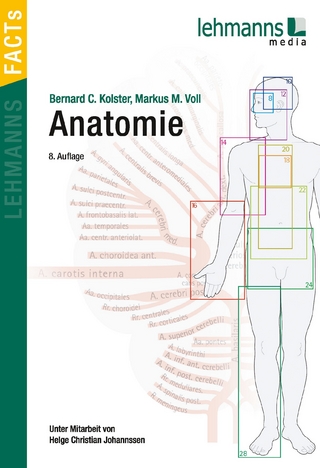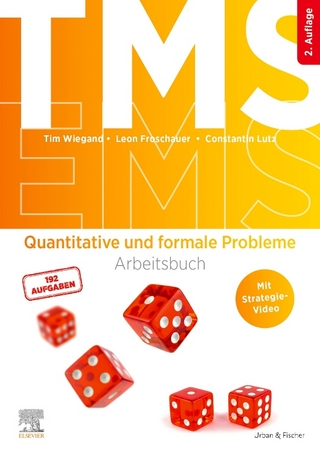
Reviews in Computational Chemistry, Volume 29
John Wiley & Sons Inc (Verlag)
978-1-119-10393-6 (ISBN)
Noncovalent Interactions in Density-Functional Theory
Long-Range Inter-Particle Interactions: Insights from Molecular Quantum Electrodynamics (QED) Theory
Efficient Transition-State Modeling using Molecular Mechanics Force Fields for the Everyday Chemist
Machine Learning in Materials Science: Recent Progress and Emerging Applications
Discovering New Materials via a priori Crystal Structure Prediction
Introduction to Maximally Localized Wannier Functions
Methods for a Rapid and Automated Description of Proteins: Protein Structure, Protein Similarity, and Protein Folding
Abby L. Parrill, PhD, is Professor of Chemistry in the Department of Chemistry at the University of Memphis, TN. Her research interests are in bioorganic chemistry, protein modeling and NMR Spectroscopy and rational ligand design and synthesis. In 2011, she was awarded the Distinguished Research Award by University of Memphis Alumni Association. She has given more than 100 presentations, more than 100 papers and books. Kenny B. Lipkowitz, PhD, is a recently retired Professor of Chemistry from North Dakota State University.
Contributors x
Preface xii
Contributors to Previous Volumes xv
1 Noncovalent Interactions in Density Functional Theory 1
Gino A. DiLabio and Alberto Otero-de-la-Roza
Introduction 1
Overview of Noncovalent Interactions 3
Theory Background 9
Density-Functional Theory 9
Failure of Conventional DFT for Noncovalent Interactions 17
Noncovalent Interactions in DFT 20
Pairwise Dispersion Corrections 20
Potential-Based Methods 42
Minnesota Functionals 47
Nonlocal Functionals 54
Performance of Density Functionals for Noncovalent Interactions 59
Description of Noncovalent Interactions Benchmarks 59
Performance of Dispersion-Corrected Methods 66
Noncovalent Interactions in Perspective 74
Acknowledgments 78
References 79
2 Long-Range Interparticle Interactions: Insights from Molecular Quantum Electrodynamics (QED) Theory 98
Akbar Salam
Introduction 98
The Interaction Energy at Long Range 101
Molecular QED Theory 104
Electrostatic Interaction in Multipolar QED 112
Energy Transfer 114
Mediation of RET by a Third Body 119
Dispersion Potential between a Pair of Atoms or Molecules 123
Triple–Dipole Dispersion Potential 128
Dispersion Force Induced by External Radiation 132
Macroscopic QED 136
Summary 141
References 143
3 Efficient Transition State Modeling Using Molecular Mechanics Force Fields for the Everyday Chemist 152
Joshua Pottel and Nicolas Moitessier
Introduction 152
Molecular Mechanics and Transition State Basics 154
Molecular Mechanics 154
Transition States 157
Ground State Force Field Techniques 158
Introduction 158
ReaxFF 159
Reaction Force Field 161
Seam 163
Empirical Valence Bond/Multiconfiguration Molecular Dynamics 166
Asymmetric Catalyst Evaluation 169
TSFF Techniques 173
Introduction 173
Q2MM 175
Conclusion and Prospects 178
References 178
4 Machine Learning in Materials Science: Recent Progress and Emerging Applications 186
Tim Mueller, Aaron Gilad Kusne, and Rampi Ramprasad
Introduction 186
Supervised Learning 188
A Formal Probabilistic Basis for Supervised Learning 189
Supervised Learning Algorithms 199
Unsupervised Learning 213
Cluster Analysis 215
Dimensionality Reduction 226
Selected Materials Science Applications 237
Phase Diagram Determination 237
Materials Property Predictions Based on Data from Quantum Mechanical Computations 240
Development of Interatomic Potentials 245
Crystal Structure Predictions (CSPs) 249
Developing and Discovering Density Functionals 250
Lattice Models 251
Materials Processing and Complex Materials Behavior 256
Automated Micrograph Analysis 257
Structure–Property Relationships in Amorphous Materials 260
Additional Resources 263
Summary 263
Acknowledgments 264
References 264
5 Discovering New Materials via A Priori Crystal Structure Prediction 274
Eva Zurek
Introduction and Scope 274
Crystal Lattices and Potential Energy Surfaces 276
Calculating Energies and Optimizing Geometries 281
Methods to Predict Crystal Structures 282
Following Soft Vibrational Modes 283
Random (Sensible) Structure Searches 284
Simulated Annealing 285
Basin Hopping and Minima Hopping 287
Metadynamics 288
Particle Swarm Optimization 289
Genetic Algorithms and Evolutionary Algorithms 291
Hybrid Methods 292
The Nitty-Gritty Aspects of Evolutionary Algorithms 294
Workflow 294
Selection for Procreation 295
Evolutionary Operators 297
Maintaining Diversity 299
The XtalOpt Evolutionary Algorithm 300
Practical Aspects of Carrying out an Evolutionary Structure Search 303
Crystal Structure Prediction at Extreme Pressures 312
Note in Proof 315
Conclusions 316
Acknowledgments 317
References 317
6 Introduction to Maximally Localized Wannier Functions 327
Alberto Ambrosetti and Pier Luigi Silvestrelli
Introduction 327
Theory 329
Bloch States 329
Wannier Functions 331
Maximally Localized Wannier Functions: Γ-Point Formulation 333
Extension to Brillouin-Zone k]Point Sampling 336
Degree of WF Localization 337
Entangled Bands and Subspace Selection 338
Applications 340
Charge Visualization 340
Charge Polarization 344
Bonding Analysis 348
Amorphous Phases and Defects 351
Electron Transport 354
Efficient Basis Sets 356
Hints About MLWFs Numerical Computation 361
Brief Review of the Presently Available Computational Tools 361
MLWF Generation 362
References 363
7 Methods for a Rapid and Automated Description of Proteins: Protein Structure, Protein Similarity, and Protein Folding 369
Zhanyong Guo and Dieter Cremer
Introduction 369
Protein Structure Description Methods Based on Frenet Coordinates and/or Coarse Graining 373
The Automated Protein Structure Analysis (APSA) 375
The Curvature–Torsion Description for Idealized Secondary Structures 378
Identification of Helices, Strands, and Coils 384
Difference between Geometry-Based and H]Bond-Based Methods 385
Combination of Geometry-Based and H-Bond]Based Methods 388
Chirality of SSUs 388
What is a Regular SSU? 389
A Closer Look at Helices: Distinction between α- and 310-Helices 391
Typical Helix Distortions 395
Level 2 of Coarse Graining: The Curved Vector Presentation of Helices 398
Identification of Kinked Helices 402
Analysis of Turns 406
Introduction of a Structural Alphabet 409
Derivation of a Protein Structure Code 411
Description of Protein Similarity 416
Qualitative and Quantitative Assessment of Protein Similarity 417
The Secondary Code and Its Application in Connection with Protein Similarity 423
Description of Protein Folding 423
Concluding Remarks 426
Acknowledgments 428
References 428
Index 439
| Erscheint lt. Verlag | 27.5.2016 |
|---|---|
| Reihe/Serie | Reviews in Computational Chemistry ; 29 |
| Verlagsort | New York |
| Sprache | englisch |
| Maße | 165 x 241 mm |
| Gewicht | 816 g |
| Themenwelt | Medizin / Pharmazie ► Studium ► 1. Studienabschnitt (Vorklinik) |
| Naturwissenschaften ► Chemie ► Physikalische Chemie | |
| Naturwissenschaften ► Chemie ► Technische Chemie | |
| Naturwissenschaften ► Physik / Astronomie ► Quantenphysik | |
| Technik ► Maschinenbau | |
| Technik ► Umwelttechnik / Biotechnologie | |
| ISBN-10 | 1-119-10393-2 / 1119103932 |
| ISBN-13 | 978-1-119-10393-6 / 9781119103936 |
| Zustand | Neuware |
| Haben Sie eine Frage zum Produkt? |
aus dem Bereich


